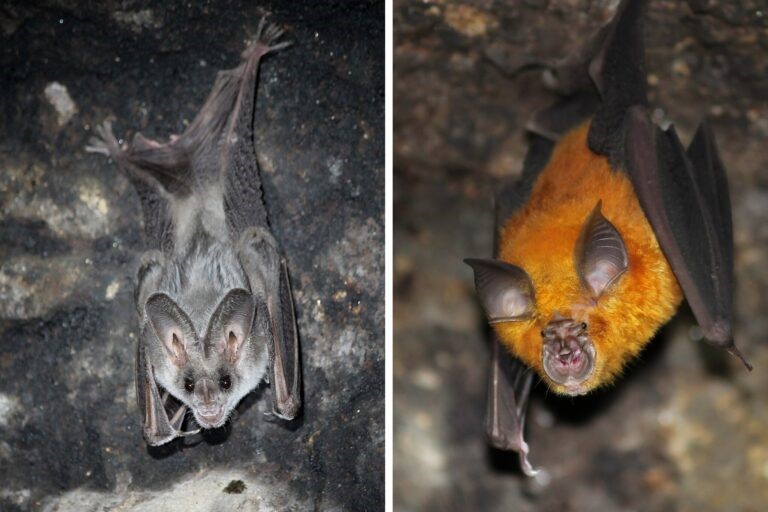India Launches BatEchoMon: Automated Bat Monitoring System
Syllabus:
GS-3 :
Achievements of Indians in Science & Technology , Space Technology
Focus:
BatEchoMon, India’s first automated bat monitoring system, was developed to aid bat researchers by identifying species, recording calls, and processing data in real-time. It simplifies the previously tedious manual work, enhancing bat ecology research across India, especially in urban and rural ecosystems.
Understanding BatEchoMon:
- Innovation in Bat Monitoring: BatEchoMon is India’s first automated bat monitoring system designed to detect and analyze bat echolocation calls in real-time.
- Background and Development: Developed by Kadambari Deshpande (bat biologist) and Vedant Barje (WildTech Project Leader), BatEchoMon is a result of collaborative research at the Long-Term Urban Ecological Observatory at the Indian Institute for Human Settlements (IIHS), Bengaluru.
- Purpose: The primary aim is to streamline bat research by automating data collection and species identification, significantly reducing the time and effort required for manual data processing.
Working Mechanism of BatEchoMon:
Key Components
- Raspberry Pi Microprocessor: BatEchoMon’s core is powered by a Raspberry Pi microprocessor that processes data captured by the Audiomoth ultrasonic detector.
- Audiomoth: A low-cost ultrasonic detector configured to function as an “ultrasonic microphone,” which records bat echolocation calls.
- Solar Powered and WiFi Enabled: The device is equipped with a solar panel and battery for power and a WiFi communication unit for data transmission. In the absence of sunlight, it can last for up to eight days.
How it Works ?
- Activation at Sunset: BatEchoMon is designed to activate at sunset when bats begin flying.
- Data Capture: The system continuously listens to and records the sounds in the environment. It isolates bat calls from other noises like insects and environmental sounds.
- Species Identification: Using a convolutional neural network (CNN), the system analyzes the peak frequency and structure of each bat call and matches it to a pre-trained model to identify the bat species.
- Output: The system generates a spectrogram (visual representation of the frequency over time) and audio recordings of bat calls, along with species-specific statistical data on bat activity patterns.
Benefits and Implications for Bat Research:
Accelerating Data Processing
- Time Efficiency: Prior to BatEchoMon, researchers like Deshpande spent months processing data manually, going through hours of recordings to identify bat calls. BatEchoMon reduces this to a few hours, greatly enhancing the speed of research.
- Real-time Analysis: Researchers can now obtain real-time insights into bat activity without the need for extensive manual review, significantly improving the workflow in ecological studies.
Broader Research Opportunities
- Increased Accessibility: The device enables researchers to study bat species across different parts of the country, providing a wider perspective on bat ecology in varied environmental conditions.
- Future Prospects: As the system evolves, the team hopes to expand BatEchoMon’s capabilities to identify more bat species across India, especially in urban, peri-urban, and human-modified forested areas.
- Global Relevance: Experts like Rohit Chakravarty suggest that BatEchoMon could be a milestone in global bat research. It offers a new dimension to the study of bat species, particularly in India, where bat research has traditionally been underdeveloped.
Challenges in BatEchoMon’s Development:
Limited Species Data
- Challenges with Training Datasets: One of the main obstacles in expanding BatEchoMon’s reach is the limited availability of reference libraries for bat species’ calls. The device currently identifies 6 to 7 common Indian bat species but will require additional data to expand this list.
- Training and Classification: Creating robust and diverse training datasets is crucial for improving the detection accuracy for various bat species, especially in different geographical locations.
Technical and Resource Constraints
- Device Setup and Customization: Although BatEchoMon is modular and customizable, the team is cautious about revealing specific details on the setup process. Customization in terms of battery size, automation, and data relay can be adapted to different environments, but challenges persist in scaling the system for broader use.
- Global Comparison: While BatEchoMon is a significant development, it faces competition from advanced bat detection systems used internationally. However, its affordability—costing a third of more advanced systems—gives it an edge in terms of accessibility and wider adoption.
Future Prospects :
Next Steps for BatEchoMon
- Extended Testing: BatEchoMon has successfully completed pilot tests at an IIHS site in Nashik, and plans are underway for extended testing in diverse environmental conditions and across different geographic regions.
- Broader Collaboration: The team hopes to collaborate with other bat researchers and conservationists, such as through initiatives like the State of India’s Bats workshop, to improve the system’s detection capabilities and expand its species identification list.
Conclusion:
- Transforming Bat Ecology in India: BatEchoMon represents a significant leap forward in bat ecology research in India, streamlining data collection and facilitating deeper insights into bat behavior and species distribution.
- Global Milestone: With its potential for international adoption, BatEchoMon is set to make a global impact, providing researchers worldwide with a more efficient tool to study bats and their ecological significance.
- Implications for Conservation: In the long run, this system can aid in bat conservation efforts by improving the understanding of bat populations and their interactions with ecosystems, contributing to more informed and effective conservation policies.
Source: TH
Mains Practice Question:
Discuss the significance of BatEchoMon, India’s first automated bat monitoring system, in advancing ecological research. What challenges do such innovations face in terms of data collection and species identification, and how can they contribute to global conservation efforts?




